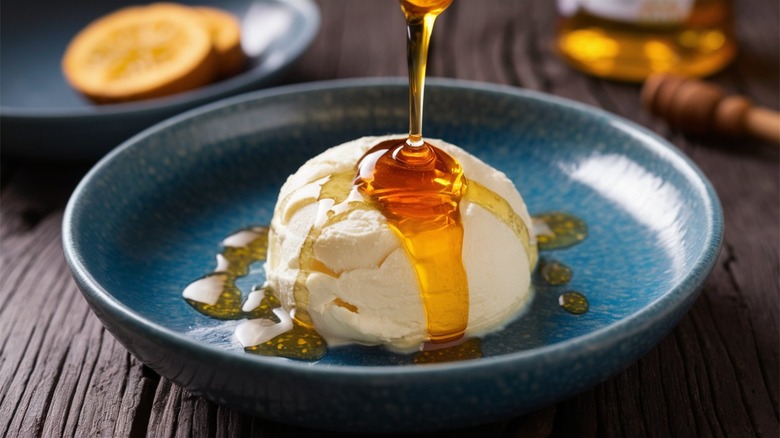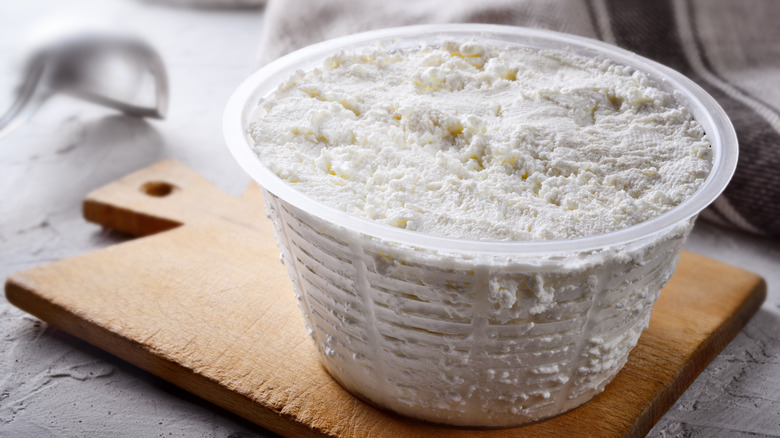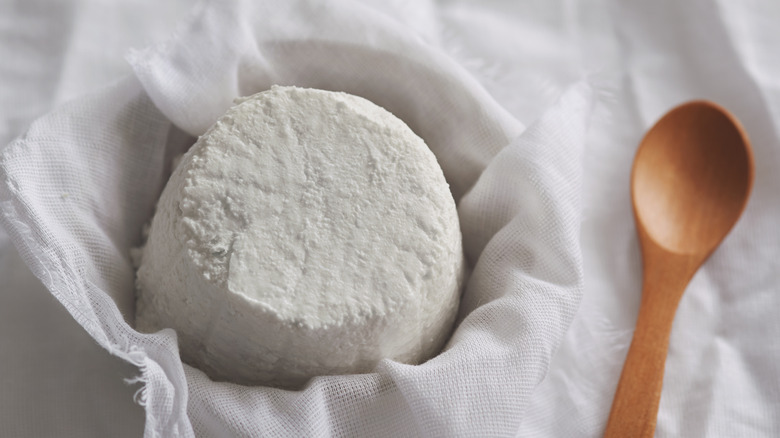Why You Should Always Strain Store-Bought Ricotta Before Using It
The best ingredients are the ones that can be incorporated into a variety of different dishes, whether sweet, savory, tart, or tangy. Ricotta, one of the most popular Italian cheeses, finds its way into this category of versatile foods. It can be used in all kinds of recipes, from luxurious ricotta pancakes to springy asparagus and lemon tarts. While you might already be familiar with many of its wondrous applications, did you know that you should strain the store-bought kind before using it? Ricotta be kidding if not!
The importance of this step becomes easier to understand once you know what ricotta actually is. It's traditionally made from leftover whey, a yellow liquid byproduct of the cheesemaking process (to which whole milk and vinegar are sometimes added). From there, the whey is heated, making any remaining curds form together until you're left with soft, delicious ricotta. This is where the cheese's name (meaning "recooked") comes into play. It can also be made entirely from whole milk (which is what you'll most often find in grocery stores). Because it starts out as such a liquidy product, it follows that some straining is called for when using store-bought ricotta in your cooking.
Why you should remove excess moisture from store-bought ricotta
Straining store-bought ricotta is essential for getting rid of the cheese's naturally excessive moisture, especially when using the kind made from cow's milk, which has a high moisture content and a milder taste than versions made from the whey or milk of goats, sheep, or water buffalo (which are all regionally available in Italy, though less common in the United States). Overwhelmingly, the ricotta available Stateside is made from a mixture of cow's milk, whey, and some acid or enzyme, yielding wet, fluffy curds.
Not every brand removes the same amount of liquid from their final product; this variance in texture and production process is why straining your store-bought ricotta is the key to making sure your recipe turns out just right. It can be the difference between a wet, mushy dish that doesn't come together versus a well-structured one. Baked goods like puff pastries, cupcakes, and cookies will especially benefit from this simple action. Otherwise, you could end up with runny lasagna or flabby focaccia, and your cheesecake or cannoli filling might just turn saucy instead.
How to strain ricotta
Only a few supplies are needed to strain your store-bought ricotta: a bowl, a mesh strainer, some cheesecloth, and a heavy object that fits within the bowl. You should also keep a spatula on hand.
Place the strainer over your bowl, and line it with cheesecloth, then spoon the ricotta inside, spreading it into an even layer. If you're in a rush, this is the time for your spatula to shine. You can gently stir and press down on the cheese with the spatula over roughly a half hour until you get as much liquid out as possible. You could also try wrapping the ricotta in the cloth and squeezing gently, or even spreading the ricotta out and pressing it between layers of paper towels for quick moisture absorption.
However, if you aren't in a hurry, it's best to give the ricotta as much time as possible to drain. This is also accomplished with a strainer, but you'll want to fully cover the cheese and then weigh it down with a heavy object. You can leave the ricotta in th fridge as it strains for anywhere from an hour to overnight. The longer you leave it, the better it will hold up when you use it to whip up delectable dishes like fluffy lemon ricotta pancakes and classic cheesy baked ziti.


